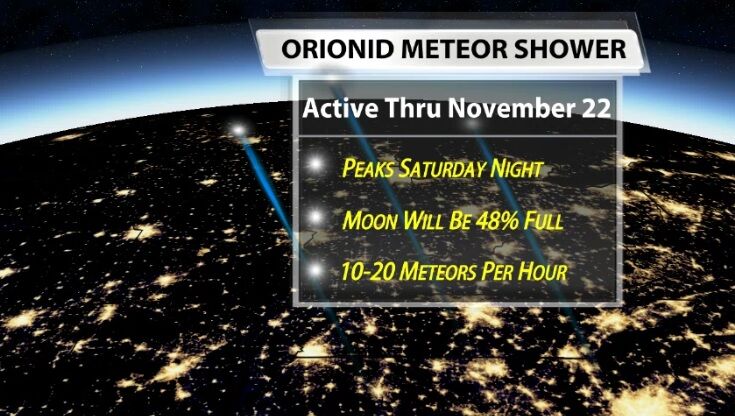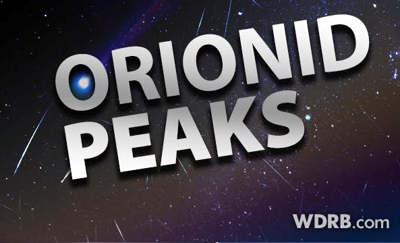The Orionid meteor shower is expected to peak tonight which means 10-20 meteors per hour could be possible!

Orionids are a popular meteor shower because these shooting stars are best known for how bright they are and how fast they move. Fast-moving meteors can often appear to leave trains of light behind them in the sky. For the best opportunity to see a shooting star this weekend get away from all lights. The moon is 48% full, so it's already putting enough light into the sky to drown out the fainter meteors. Look southeast between midnight and dawn, but you will need to give your eyes about half an hour to adjust to the darkness. The weather looks like it will cooperate nicely! With a high pressure center moving in behind our weak cold front, the sky should be partly or mostly clear of clouds.

While the meteor shower is expected to peak tonight, it stays active for another month.
Orionid meteors come from space dust; here's how NASA explains: "Meteors come from leftover comet particles and bits from broken asteroids. When comets come around the sun, the dust they emit gradually spreads into a dusty trail around their orbits. Every year the Earth passes through these debris trails, which allows the bits to collide with our atmosphere where they disintegrate to create fiery and colorful streaks in the sky. The pieces of space debris that interact with our atmosphere to create the Orionids originate from comet 1P/Halley. Each time that Halley returns to the inner solar system its nucleus sheds ice and rocky dust into space. The dust grains eventually become the Orionids in October and the Eta Aquarids in May if they collide with Earth's atmosphere."



